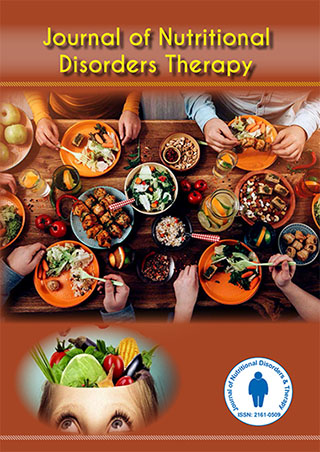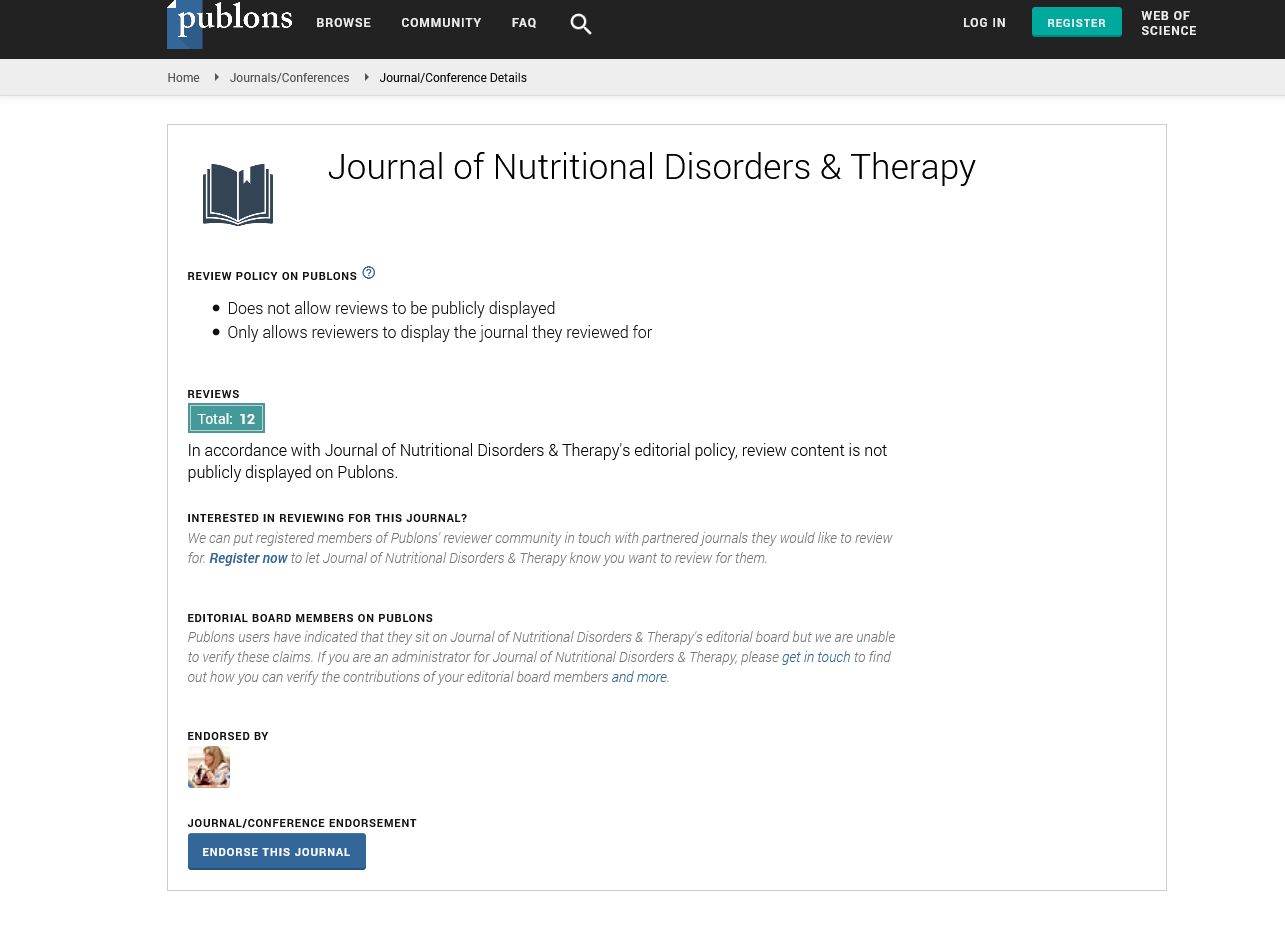Indexed In
- Open J Gate
- Genamics JournalSeek
- Academic Keys
- JournalTOCs
- Ulrich's Periodicals Directory
- RefSeek
- Hamdard University
- EBSCO A-Z
- OCLC- WorldCat
- Publons
- Geneva Foundation for Medical Education and Research
- Euro Pub
Useful Links
Share This Page
Journal Flyer

Open Access Journals
- Agri and Aquaculture
- Biochemistry
- Bioinformatics & Systems Biology
- Business & Management
- Chemistry
- Clinical Sciences
- Engineering
- Food & Nutrition
- General Science
- Genetics & Molecular Biology
- Immunology & Microbiology
- Medical Sciences
- Neuroscience & Psychology
- Nursing & Health Care
- Pharmaceutical Sciences
Commentary - (2025) Volume 15, Issue 1
Nutrient Deficiencies and Risk Factors for Kwashiorkor in Early Childhood
Victor Clasen*Received: 25-Feb-2025, Manuscript No. JNDT-25-29117; Editor assigned: 27-Feb-2025, Pre QC No. JNDT-25-29117 (PQ); Reviewed: 13-Mar-2025, QC No. JNDT-25-29117; Revised: 20-Mar-2025, Manuscript No. JNDT-25-29117 (R); Published: 27-Mar-2025, DOI: 10.35248/2161-0509.25.15.321
Description
Kwashiorkor represents a severe imbalance between macronutrient scarcity and bodily demand, often following cessation of breastfeeding and reliance on starchy staples. Unlike marasmus, which reflects caloric deprivation, kwashiorkor is marked by protein insufficiency sufficient to produce edema and hepatosteatosis. Growing evidence suggests that deficits in sulfur amino acids may underlie some of its distinctive manifestations.
Methionine serves as a methyl group donor through S-adenosylmethionine, supporting methylation reactions. It can be converted to cysteine, which contributes to glutathione synthesis — a primary intracellular antioxidant. These pathways support detoxification, immune function and cellular repair. When dietary methionine and cysteine are insufficient, these systems falter, potentially contributing to the pathological features of kwashiorkor.
Sulfur amino acid metabolism
Methionine: An essential amino acid, methionine must be supplied by food. After absorption, it converts to S-adenosylmethionine, which donates methyl groups and regulates gene expression and lipid metabolism. A portion converts to homocysteine and onward to cysteine.
Cysteine: Semi-essential in humans: it can be produced from methionine but may become essential when intake is low. A major component of glutathione, cysteine provides defense against oxidative stress and supports keratin, collagen and immune mediator production.
Intake recommendations: The World Health Organization (WHO) describes a safe intake of 10.4 mg methionine plus cysteine per kilogram of body weight per day in children. Global dietary surveys show many vulnerable populations fall well below this requirement.
Patterns of sulfur amino acid intake
Surveys in sub-Saharan Africa and parts of Southeast Asia indicate child diets heavily rely on maize, cassava, or rice, which are low in sulfur amino acids. Animal protein sources rich in methionine and cysteine such as milk, eggs, fish, or meat are often limited or absent in weaning diets due to cost or availability.
In rural Nigerian surveys, diets provided approximately 4–6 mg methionine and cysteine per kilogram less than recommended. Zimbabwean studies noted that diets are supplying ≤ 50% of recommended amounts in children aged 6–24 months. A small Cambodian cohort reported intake at 40% of target, correlating with symptoms of protein-energy malnutrition and hepatic enlargement. These intake patterns align with classic observations of kwashiorkor in populations that subsist on cereal-based blends with minimal animal protein.
Pathophysiological role of sulfur amino acid
Several mechanisms may explain the development of kwashiorkor under sulfur amino acid deficiency conditions.
Impaired detoxification: Glutathione is central to the body's antioxidant system. With low cysteine, its production falls, increasing oxidative damage. Oxidative injury weakens endothelial integrity, leading to edema and immune dysfunction.
Disrupted lipid export: Methionine contributes methyl groups for phosphatidylcholine synthesis via the methylation pathway. Phosphatidylcholine is essential for VLDL secretion from hepatocytes. Deficiency impairs lipid export, producing fatty infiltration of the liver.
Impaired protein synthesis and repair: Methionine limits the first steps of protein synthesis (IRE recognition; tRNA loading). Inadequate availability interferes with growth, wound healing and skin regeneration, worsening skin depigmentation and dermatoses seen in kwashiorkor.
Impaired methylation reactions: Beyond phospholipids, methylation reactions affect gene expression, neurotransmitter synthesis and DNA repair. These processes may be altered in kwashiorkor, contributing to developmental delays, neurological signs and immunosuppression.
Deficiency of sulfur amino acids methionine and cysteine may contribute to the development of kwashiorkor through multiple metabolic pathways, including impaired detoxification, faulty lipid handling and compromised protein and methylation processes. Poor intake of these amino acids in cereal-based diets appears to increase vulnerability to this specific form of malnutrition. Ensuring adequate dietary supply of methionine and cysteine through balanced protein sources, fortified foods, or supplementation may reduce the incidence of kwashiorkor. Further research and public health emphasis on sulfur amino acid nutrition during early childhood are essential to minimizing risk in vulnerable populations.
Citation: Clasen V (2025). Nutrient Deficiencies and Risk Factors for Kwashiorkor in Early Childhood. J Nutr Disord Ther. 15:321.
Copyright: © 2025 Clasen V. This is an open-access article distributed under the terms of the Creative Commons Attribution License, which permits unrestricted use, distribution, and reproduction in any medium, provided the original author and source are credited.

